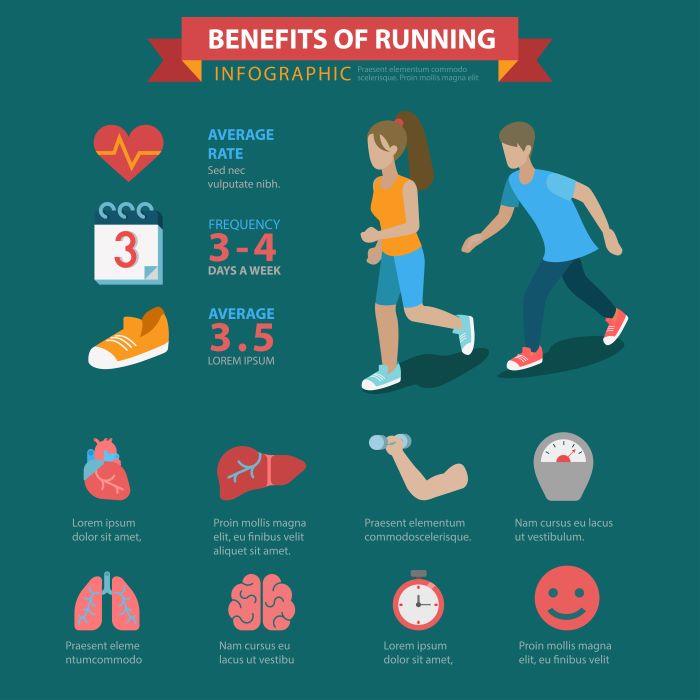When embarking on the journey to run a half marathon, one of the first questions many aspiring runners ponder is how long are half marathon training plans? Typically, these plans range from 10 to 16 weeks, depending on the runner’s experience and fitness level. For beginners, a 12 to 16-week plan may be ideal, allowing ample time to build stamina and confidence.
Training plans usually consist of a mix of long runs, speed workouts, and rest days to ensure a balanced approach to fitness. Here’s a quick breakdown of what to expect:
- Long Runs: These are essential for building endurance, typically scheduled on weekends, gradually increasing in distance.
- Speed Workouts: Incorporating intervals or tempo runs improves overall pace and efficiency.
- Cross-Training: Activities like cycling or swimming can be included to enhance fitness while reducing the risk of injury.
- Rest Days: Crucial for recovery, ensuring muscles rebuild and strengthen.
Understanding the duration and structure of these training plans is vital for success. Tailoring a plan to fit your personal needs—whether you are a first-time runner or an experienced athlete—can make all the difference in your race day performance. Visit our website to learn more and get started today! Click here.
Typical Length of Half Marathon Training Schedules
Exploring the typical length of half marathon training schedules is essential for runners aiming to reach their goals effectively. Most training schedules are designed to last between 12 to 16 weeks, providing a structured approach to gradually build endurance and speed.
For beginners, a 14 to 16-week schedule is often recommended. This extended timeframe allows for a more gradual increase in mileage, which is crucial for preventing injuries and ensuring adequate recovery. Here’s how a typical schedule is usually structured:
- Weeks 1-4: Focus on establishing a base with shorter runs, usually ranging from 3 to 5 miles.
- Weeks 5-8: Gradually increase the long run distance, adding in some speed workouts once a week.
- Weeks 9-12: Peak training phase, where long runs can reach up to 10-12 miles, and speed work becomes more intense.
- Weeks 13-16: Tapering phase, reducing mileage to allow the body to recover and prepare for race day.
For experienced runners, a 10 to 12-week schedule may suffice, focusing on maintaining fitness levels while incorporating more challenging workouts. Ultimately, choosing the right schedule tailored to your experience and fitness level is vital for a successful half marathon experience.
Factors Influencing Training Plan Duration

When considering the duration of a half marathon training plan, several factors come into play that can significantly influence how long the program should last. Understanding these elements is crucial for personalizing your training and achieving optimal results.
Some of the primary factors include:
- Fitness Level: Beginners may require longer training durations, generally 14 to 16 weeks, to build the necessary endurance, while seasoned runners might opt for a shorter 10 to 12-week plan.
- Running Experience: Runners who have previously completed half marathons or similar distances may find they can handle a more condensed training schedule compared to those who are new to the sport.
- Injury History: Individuals with a history of injuries may need to incorporate a longer training period that allows for gradual increases in mileage, ensuring adequate recovery time and minimizing the risk of re-injury.
- Weekly Mileage: The total mileage a runner is comfortable with each week can dictate how quickly they can progress through their training plan. Higher weekly mileage may permit a shorter training duration.
- Personal Goals: If your aim is to simply finish the race, a longer plan could be beneficial. However, if you’re targeting a specific time, you might consider a focused, shorter schedule that includes more intense workouts.
By evaluating these factors, you can make more informed decisions about how long your half marathon training plan should be, ensuring it aligns with your goals and physical capabilities.
Choosing the Right Training Plan for You

Selecting the perfect training plan for your half marathon journey is essential to achieving your fitness goals and enjoying the process. With a myriad of options available, here’s how to ensure you choose a plan that suits your individual needs:
- Assess Your Fitness Level: Before diving into a plan, evaluate your current fitness level. Are you a beginner or an experienced runner? Knowing where you stand will help you select a plan that matches your abilities.
- Identify Your Goals: Reflect on what you want to achieve. Are you looking to complete the race, or do you have a specific time in mind? Your goals will dictate the intensity and structure of your training plan.
- Consider Your Schedule: Life can be busy, so it’s important to choose a plan that fits into your weekly routine. Look for a schedule that allows you to train consistently without overwhelming your commitments.
- Look for Flexibility: A good training plan should allow for some degree of flexibility. Whether it’s unexpected events or personal commitments, having the ability to adjust your training without losing progress is crucial.
- Research Different Plans: Take the time to explore various training plans available online or through running communities. Many offer customizable options that cater to different fitness levels and goals.
By carefully considering these aspects, you can select a training plan that not only keeps you motivated but also enhances your overall running experience. This personalized approach will ensure that you enjoy every step of your training journey.
Tips for Sticking to Your Training Schedule

Adhering to your training schedule is key to successfully preparing for a half marathon. Here are some practical tips to help you stay on track and maintain your motivation throughout the process:
- Create a Consistent Routine: Establishing a regular running schedule helps your body adapt to the training demands. Set specific days and times for your workouts, treating them as important appointments that you cannot miss.
- Set Realistic Goals: Break your training into manageable milestones. Whether it’s running a certain distance or improving your pace, having achievable goals will give you something to strive for and celebrate along the way.
- Find a Training Buddy: Training with a friend or joining a running group can significantly boost your commitment. Having a partner to run with not only makes training more enjoyable but also adds accountability.
- Track Your Progress: Use a running app or a journal to log your workouts. Tracking your progress can provide a tangible sense of accomplishment and motivate you to keep pushing forward.
- Incorporate Variety: Avoid monotony by mixing up your training routine. Include different types of runs, such as interval training, long runs, or hill workouts, and consider cross-training activities like cycling or swimming to keep things fresh.
- Listen to Your Body: Pay attention to how your body feels during training. If you’re feeling fatigued or experiencing pain, don’t hesitate to adjust your schedule to rest and recover. This will help prevent injuries and keep you in the game longer.
By implementing these strategies, you’ll find it easier to stick to your training schedule and enjoy the journey as you prepare for your half marathon.
Benefits of Consistent Half Marathon Training

Engaging in consistent half marathon training offers a multitude of benefits that extend beyond simply crossing the finish line. Here are some key advantages that come with committing to a structured training plan:
- Improved Physical Fitness: Regular training enhances cardiovascular endurance, builds muscle strength, and improves overall physical fitness. As you progress, you’ll notice increased stamina and an enhanced ability to perform daily activities.
- Weight Management: Half marathon training is an effective way to manage your weight. The combination of running and structured workouts burns calories and can help you achieve or maintain a healthy weight.
- Mental Resilience: Training for a half marathon is not just a physical challenge; it also builds mental strength. Overcoming the hurdles of training fosters a sense of accomplishment and boosts your self-confidence.
- Community Connection: As part of your training journey, you have the opportunity to join a vibrant running community. Sharing your experiences and challenges with fellow runners can provide support and motivation.
- Stress Relief: Running is known to release endorphins, the body’s natural mood lifters. Consistent training can help alleviate stress, improve your mood, and contribute to overall mental well-being.
Embracing a consistent training regimen for your half marathon can transform your life in many positive ways. Ready to start your journey? Visit our website to learn more and get started today! Click here.


